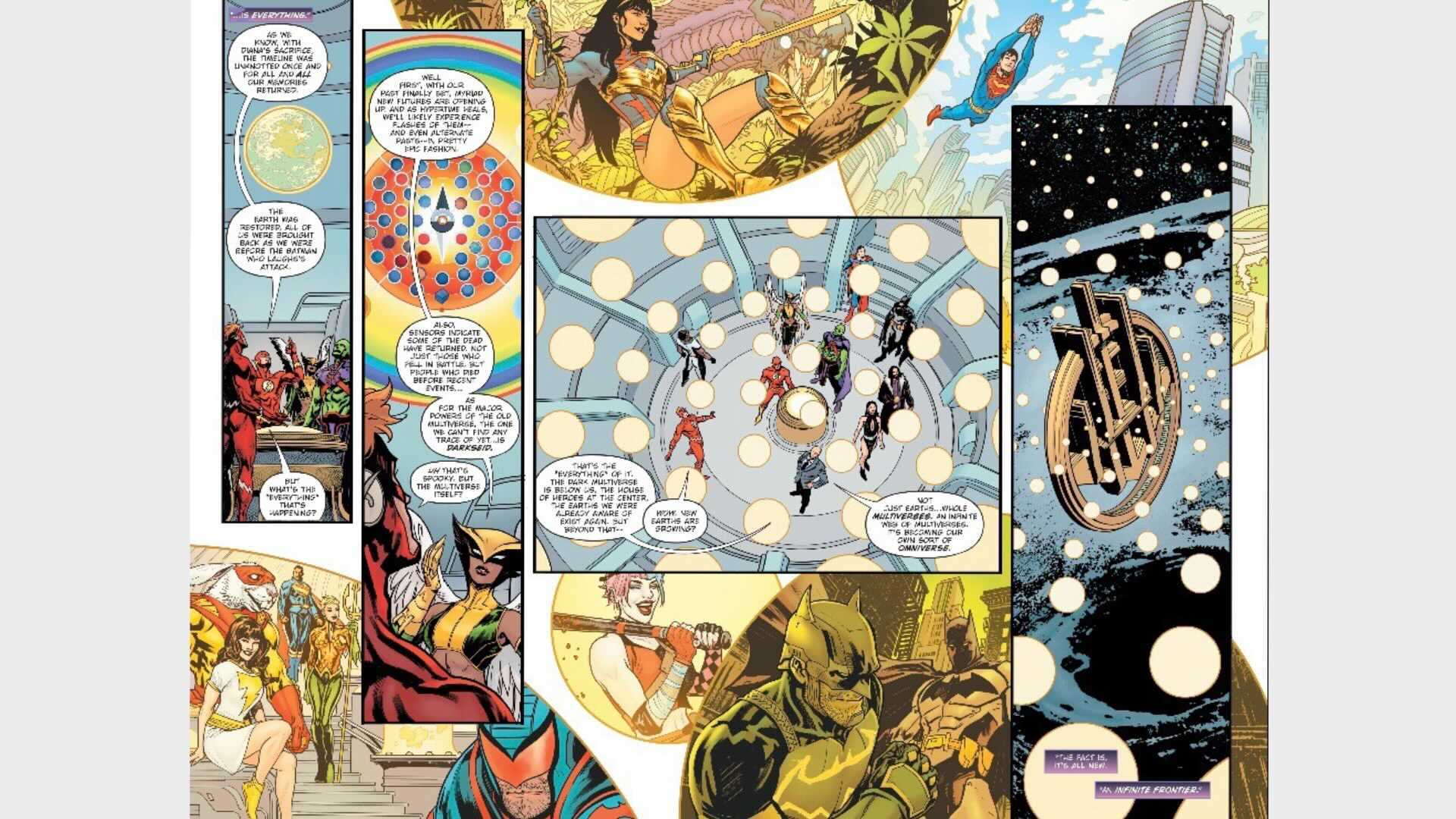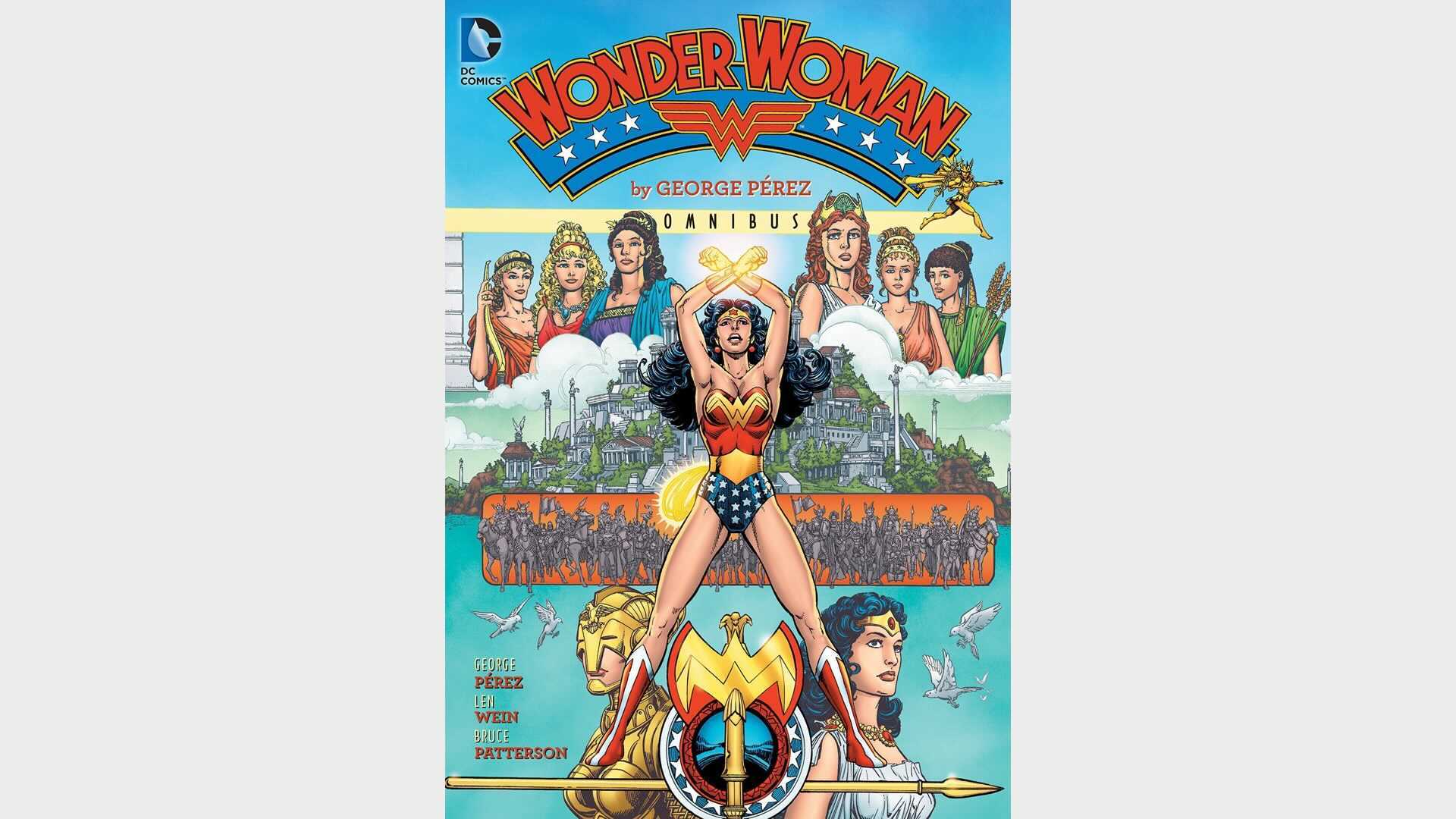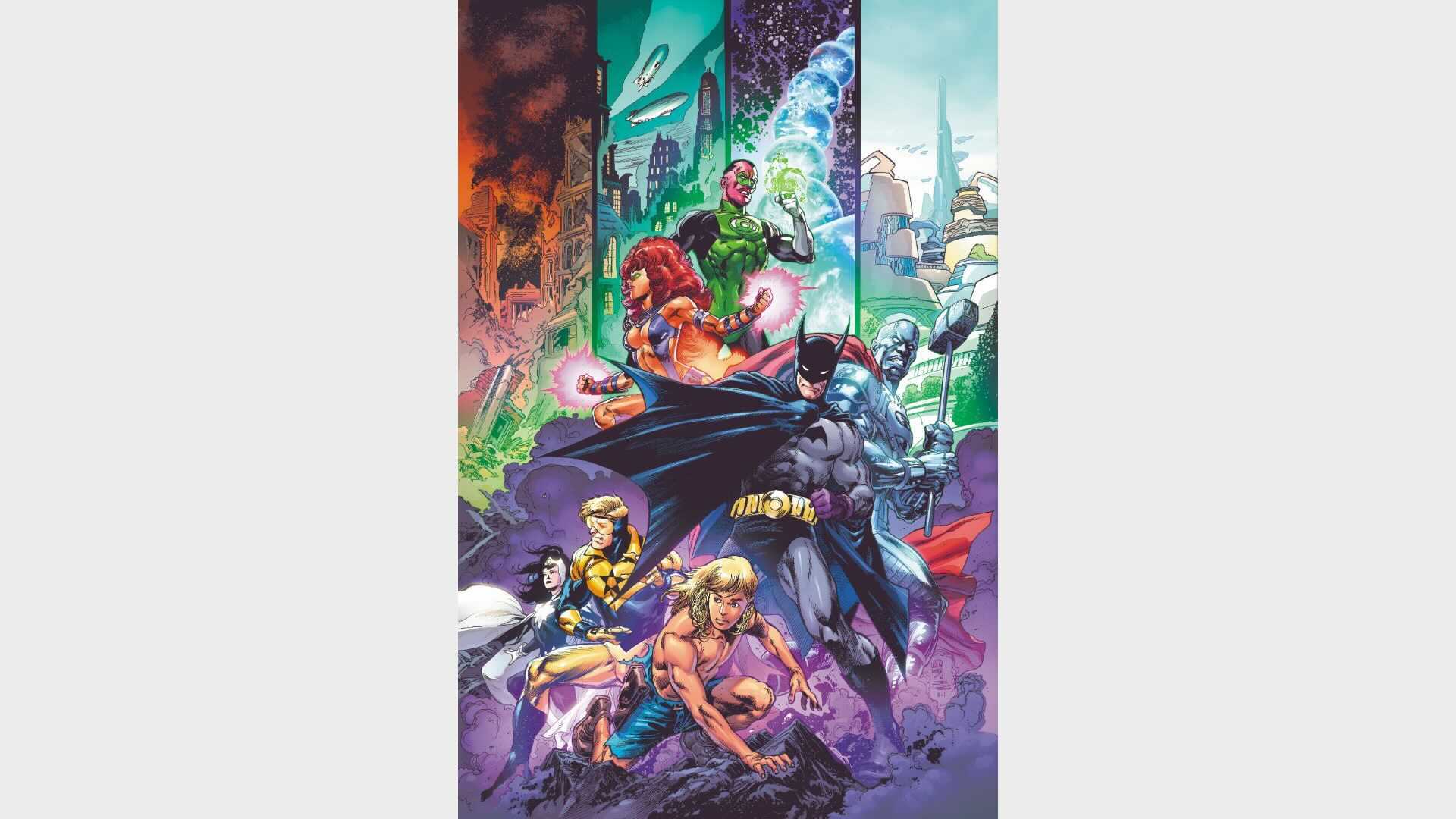DC spent 35 years trying to fix continuity, now it's your turn - labombardtrage1936
"...everything was put rearward where it belonged...and we do mean everything. All the damage from altogether the Crises was unstuck…"
Combined more time with emphasis…
"Whol the harm from Every last the Crises was undone…"
Long-time DC readers might have uncomprehensible that little nugget of maybe life-sustaining information, slipped somewhat inconspicuously into a May 25 press announcement from the publishing firm astir the quaternary and fifth issues of the upcoming six-issue limited series Immortal Frontier, on sale in Aug.
Written by Joshua Williamson, Infinite Frontier springs from the game-changing events of January's Dark Nights: Death Metal #7 by writer Dred Scott Synder and its brief exposition-cloggy epilogue which was more or inferior reiterated in March's Infinite Frontier #0 framework story longhand by Williamson, Snyder, and James Tynion IV.
The 10-Page Death Golden epilogue in the main defined the parameters of a untried, large DC Universe. It also set the stage for the events of the Infinite Frontier series, some story developments in some other diarrheal titles, and likely a major DC event that pits the DCU against a powered-up Darkseid in the months to come. But in terms of its effect on continuity, the impact of Death Metallic-looking was comparatively vague.
"The timeline was unknotted once and for all and all our memories returned," Barry Allen Stewart Konigsberg explains to Wally West (bolding DC's).
"...with our quondam finally arranged, incalculable parvenue futures are opening up. And as Hypertime heals, we'll possible experience flashes of them -- and even alternate pasts -- in jolly epic fashion," Hawkgirl adds.

Information technology was within reason up for interpretation what "our past finally set" and "all our memories" mean. While Snyder referred to Death Metal as an "anti-crisis," since 2016's Rebirth DC has mostly been specifically preoccupied with undoing - sometimes pointedly - the effects of the 2011 full 'New 52' reboot.
In DC terms - "arranged" and "all" have been relative to the pathway of various reboots and retcons that take seminal fluid before.
But DC hadn't really aforesaid out loud it was untying "all" Crises since and including 1986's Crisis happening Infinite Earths, at any rate until that press release's seemingly throwaway line.
In past years that would have been lawsuit for a close examination of what was still formal persistence/canon and what was the spick-and-span authorized DC timeline.
And District of Columbia would have done it itself - likely in the pages of a heavily-marketed event series.
But the publisher doesn't seem inclined to explicate this time around. And atomic number 3 has been its M.O. in more recent years, information technology International Relations and Security Network't answering questions about persistence either.
So when IT comes to determinant what the official DC timeline is, or simply if there even is one, we readers are likely on our own until further notice.
Individual readers may or may not embrace this editorial new era that emphasizes that all DC stories happened and it's more or less up to them to determine how - not even mentioning if the how even matters to them the least bit. But either way, it is a sea change from the publisher's former every-cardinal-years-or-so preoccupation with offering in-story explanations to try to make narrative sense of its now 80-year-old timeline.
[Newsarama ranks ALL of DC's Crises from best to worst .]
Did the Justice Society of America exist in the duplicate timeline as Terra firma-Efflorescence Superman or not?
Who was the founding female member of the Magistrate League - Wonder Woman or Black Canary?
Did Clark Kent ever have a life history arsenic Superboy in Smallville?
And if not, what does that mean for The Legion of Super-Heroes?
These are just some of the questions very familiar to hardcore DC readers whose answers have been (for lack of a improve term) 'fluid' since 1986 when they needed to try to take in logical sense of the various reboots DC has decided was necessary to update its core characters.

This story could be a laundry list of what DC seems to be vocation the "damage" the Crises caused. John Lackland Byrne's Man of Steel, Frank Miller and David Mazzucchelli's Batman: Yr One, George V Pérez's Wonder Cleaning lady, and Tim Truman's Hawkworld come immediately to listen when thinking around the post-Crisis touchstones that monthlong-term only wound up adding to the confusedness the avant-garde Crisis endeavored to fix and resulted in the need for maintenance Crises and reboots since.
But trying to explain entirely the retcons that have been retconned and so retconned again would take too long and induce too many an headaches to detail nowadays.
Suffice to allege in more recent years DC has progressively relied on straight-up meta-commentary and account to put Humpty Dumpty hindermost in collaboration again. Google "Superboy-Prime, punch" for more on it topic.
Death Metallic-looking essentially cemented the meta-premise DC is increasingly moving towards - that the superheroes of the DCU cognise their being is part of the fabric of a story and gets edited and reinterpreted in the informative day in and day out.
This approach was somewhat pioneered and long-advocated by writer Cede Morrison, World Health Organization started in this direction in their 1988-1995 Vertigo series Animal Man and later embraced in the practically more mainstream two volumes of Batman, Incorporated.
Despite those last mentioned series future day on the immediate heels of the 'New 52' boot, Morrison more or less picked astir on any past Batman persistence threads they wanted, prior rewritten timelines be damned.
(And btw, Morrison gives a thumbs up to the radical approach DC seems to be attractive).
But even if long-time readers previously concerned with continuity accept the new DC dogma that all DC stories have happened in the DC Omniverse, that the Clark Kent in Action Comics was and was non Superboy… that the answer to World Health Organization co-founded the Justice Department League - Diana or Dinah is "yes" … that Superman some inspired the Justice Fellowship to form and came to Terra firma years after the JSA's heyday - there's silent a fair question of communicatory social organization.
Characterization is supported olden experiences. Relationships are structured on history. Drama is supported on stakes that can't be revoked. All of these are magnified that much more in serial fabrication.
Stakes accept always been marginalized at the 'Wide Two' comic book publishers where dying is merely a temporary inconvenience, but account and experience don't have clear definitions in the DCU anymore, where do depiction and conflict come from?
Is Direct current nowadays bu relying along the micro over the macro instruction-view? Is it fundamentally indirectly telling its readers to pay attention to the directly, and don't spend too much time or energy thinking about how it fits with the then and later?

Middling interestingly, piece the publishing company South Korean won't confirm and the individual players aren't speaking, in betimes 2020 DC seemed on the path to doing what it's done in the past - offer an in-account device to explain a timeline in which Batman and Superman began their careers in the late '30s just they're both in their 30s today.
The recent two-issue series Generations: Shattered and Generations: Bad presented a DCU in which everyone just lived thirster, hence the Bruce Duke Wayne/Batman who began his career in 1939 is still the same Bruce Wayne/Batman of 2021 and he experienced every level in-between.
Information technology is an completely-compassing way of explaining DC's (and to equal fair Marvel's) biggest narrative quandary - how to explain decades of stories in the real world in a fictional world in which time is more than or less static.
Now even Generations unique spin requires some engagement from the reader to add up of ('Batman: Year One' again springs to mind), but there is evidence to suggest DC was headed in the direction of devising a timeline like that canyon and not just what's now an alternate Earth write up that ironically and somewhat confusingly adequate, is also officially in-persistence.
The sudden and startling exit of DC co-publishing company Dan DiDio in early 2020 on the evening of the launch of the then-larger Generations publishing initiative (Destroyed and Forged were part of a briefer, reimagined version) and whether it was a of import factor his passing will always be a substance of guess until someone addresses it in public (which North Korean won't be DC).
Either which room, if you happen to exist interested in reconciling how the Elvis of 2021 fits together with the Superman of 1986's Man of Steel fits together with the Superboy of 1982's Legion of First-rate-Heroes storyline The Great Darkness Saga, for now at any rate you'Re gonna have to figure that out for yourself.
DC may have reached the point where it knows any resolution it gives will just create three more questions.
Merely hey, we'll keep asking.
Regardless of where they fit in continuity, Newsarama ranks the uncomparable DC stories of all time.
Source: https://www.gamesradar.com/dc-spent-35-years-trying-to-fix-continuity-now-its-your-turn/
Posted by: labombardtrage1936.blogspot.com


0 Response to "DC spent 35 years trying to fix continuity, now it's your turn - labombardtrage1936"
Post a Comment